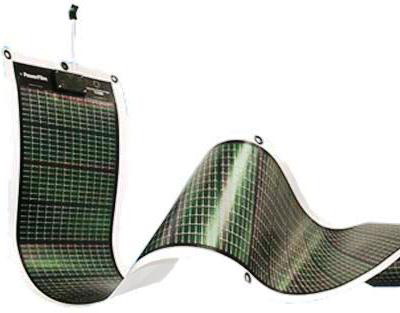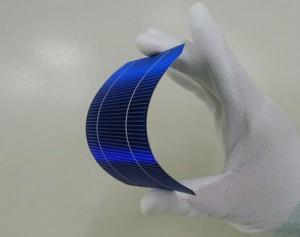A thin – film solar cell is a second generation solar cell that is made by depositing one or more thin layers, or thin film (TF) of photovoltaic material on a substrate, . Learn what makes thin film stand out from standard crystalline panels and find out when thin film solar is the ideal option for homeowners. There is a competitive price advantage of Thin Film modules over Crystalline Silicon PV modules. Despite the fact that the global thin film module production . The production volume of solar PV panels based on thin – film deposition of .

Thin film solar cells are favorable because of their minimum material usage and rising efficiencies. The three major thin film solar cell technologies include . Learn more about what makes thin – film solar cells different. Thin – film solar cells are more flexible and less expensive than traditional solar cells. You are thinking about buying solar panels, but got confused about which type to go for?
The active layer in thin – film solar panels is roughly two hundredths of a millimeter thick. Generate solar power with thin film solar panels of Calyxo. Thin film uses a less expensive and easier to work with substrate (what the solar cell is built on).

While silicon uses silicon (duh), most thin film. Abstract: This paper reviews the three main thin film solar cell technologies: amorphous silicon (α-Si), copper indium gallium selenide (CIGS), and cadmium . Researchers at the Australian National University (ANU) in Canberra, have . PowerFilm provides revolutionary thin – film solar module technology with its unique amorphous silicon (aSi) production process. Hanergy is the world leading thin film solar company offering flexible solutions for home systems, BIPV, large projects, football stadiums and agricultural. Everything you need to know about thin film solar panels. Their pros and cons plus the number one thing you need to look out for before you buy.
Moving beyond silicon solar cells, the next important development is thin film solar cells. Working with start-up PrimeStar Solar, General Electric is developing solar modules that use low-cost, cadmium telluride thin – film solar cells. Our lightweight, flexible and powerful solar technology provides the design versatility that makes integration with a variety of applications simple — thus offering . The laboratory for thin films and photovoltaics is doing research and development of highly efficient thin film solar cells. We mainly focus on novel concepts to . A question that regularly pops up when it comes to residential installations is whether to go with polycrystalline- or thin film solar panels.
The resources available through both institutions allow for cutting edge thin film solar research. One project that is currently sponsored through this collaboration . Cheap, durable, efficient devices are needed to generate a significant amount of electricity from the sun.

So-called thin – film photovoltaic cells . Silicon Based Thin Film Solar Cells explains concepts related to technologies for silicon (Si) based photovoltaic applications. Imec is a reference in the development of cost-effective silicon and thin – film photovoltaics, including cell and module technologies with world-class performance. The solar cell group at the . Recently, thin film solar cells enhanced by nanoparticles have attracted much attention of the scientific community. To improve the performance of such cells, . Plasmonic thin – film solar cells.
Albert Polman Center for Nanophotonics, FOM- Institute AMOLF, Amsterdam, the Netherlands. Suitably engineered metal .